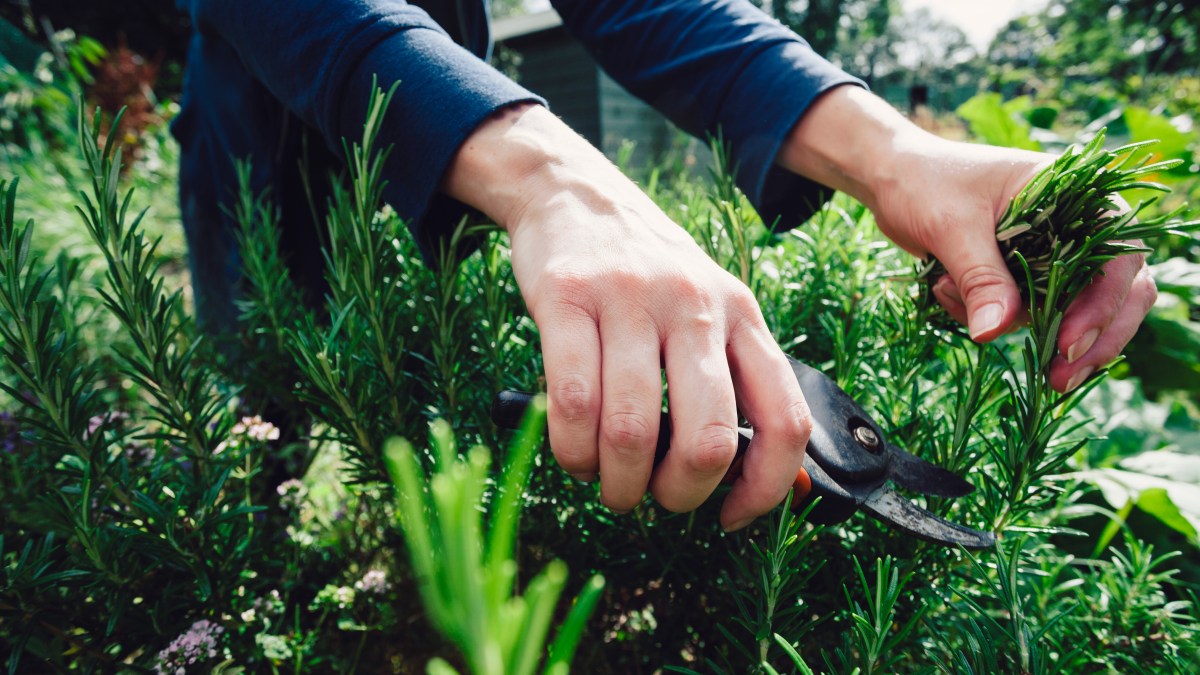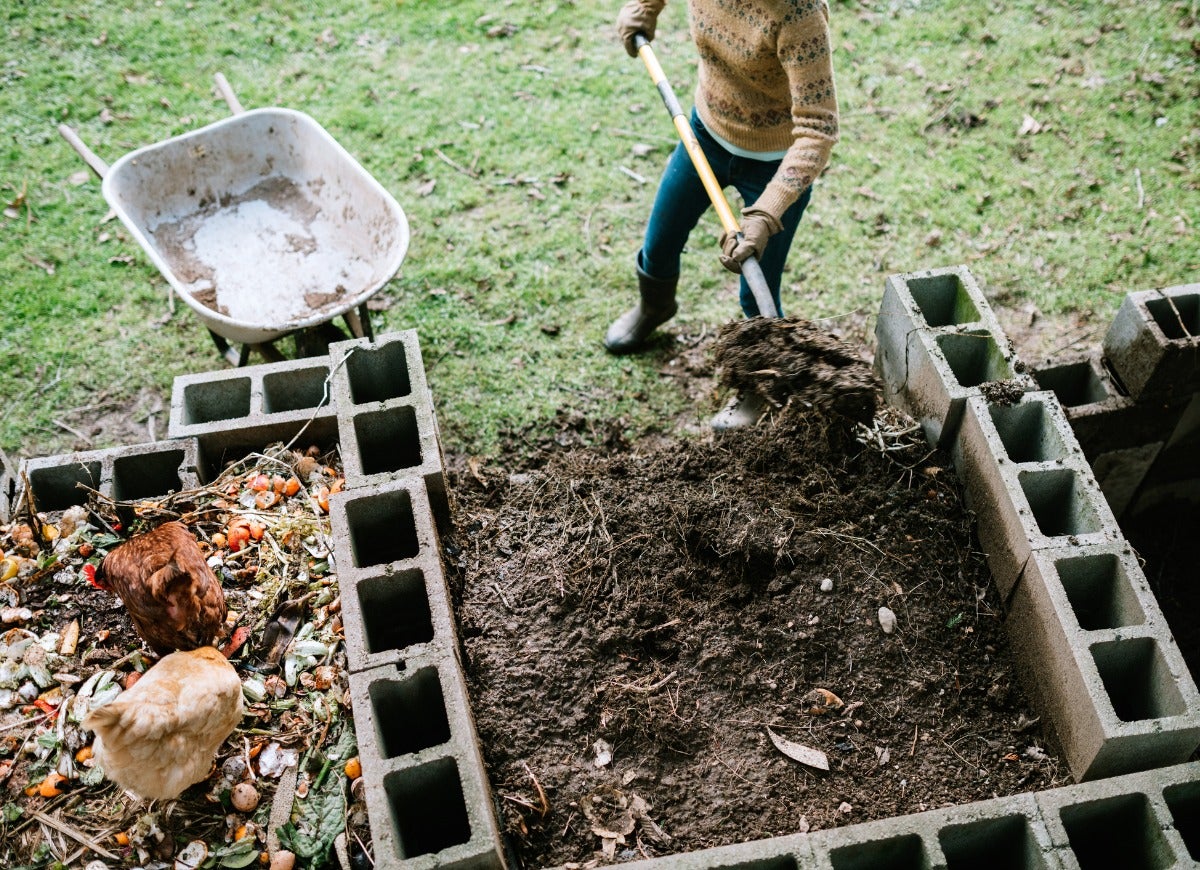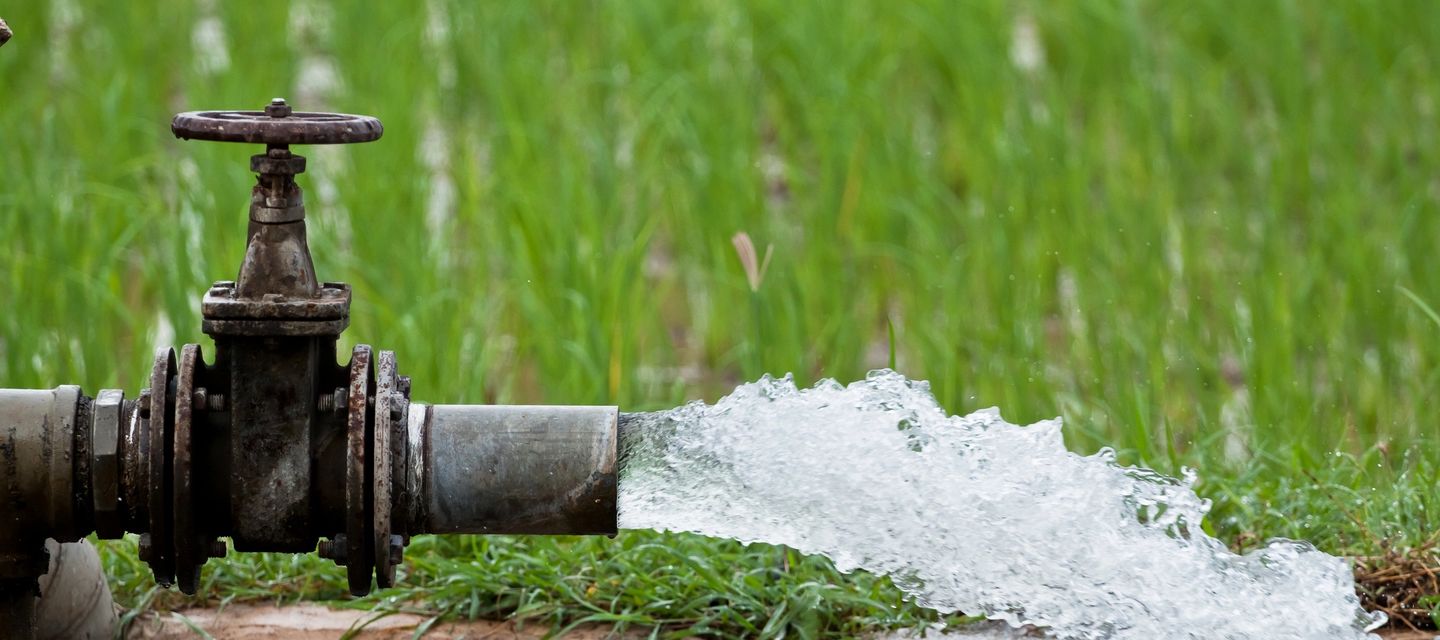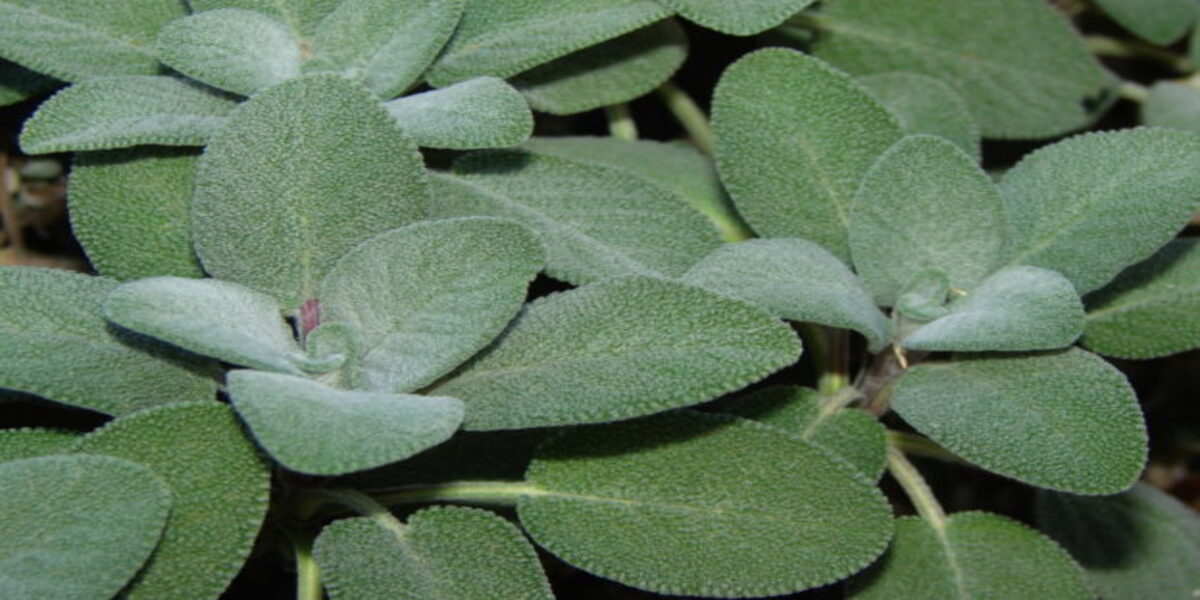Home>Gardening Basics>Understanding Soil>What Grows Well In Sandy Soil


Understanding Soil
What Grows Well In Sandy Soil
Published: February 6, 2024
Discover what grows well in sandy soil and gain a deeper understanding of soil composition, its impact on plant growth, and how to optimize your garden for successful cultivation.
(Many of the links in this article redirect to a specific reviewed product. Your purchase of these products through affiliate links helps to generate commission for Chicagolandgardening.com, at no extra cost. Learn more)
Table of Contents
Introduction
Welcome to the world of soil! Soil plays a crucial role in the growth and development of plants, providing them with essential nutrients and support. Each type of soil has its own unique characteristics, and sandy soil is no exception.
Sandy soil is lightweight, well-drained, and composed of larger particles compared to other soil types. It has excellent aeration and is easy to work with. While sandy soil may pose some challenges, it also offers several advantages for gardening and cultivation. Understanding the characteristics of sandy soil and knowing which plants thrive in it can help you create a successful and flourishing garden.
In this article, we will explore the characteristics of sandy soil and introduce you to some of the best plants, vegetables, herbs, flowers, trees, and shrubs that grow well in this type of soil. We will also provide some tips on how to care for your plants in sandy soil, ensuring they receive the nutrients they need to thrive.
Whether you have sandy soil in your garden or are considering starting a garden in sandy soil, this article will serve as your guide to making the most of it and creating a beautiful and thriving outdoor space.
Characteristics of Sandy Soil
Sandy soil has distinct characteristics that set it apart from other soil types. Understanding these characteristics will help you work with sandy soil effectively and choose the right plants that can thrive in it. Here are some key characteristics of sandy soil:
- Texture: Sandy soil is characterized by its gritty texture. It has larger particles compared to other soil types such as clay or loam. These particles are loosely packed, allowing for good drainage.
- Drainage: One of the advantages of sandy soil is its excellent drainage capability. Water drains quickly through the large spaces between the particles, preventing waterlogging and reducing the risk of root rot.
- Aeration: The loose structure of sandy soil promotes good airflow and aeration. This allows plant roots to breathe and prevents compaction of the soil.
- Water Holding Capacity: While sandy soil drains well, it also has a lower water-holding capacity compared to other soil types. The larger particles do not retain water as effectively, making it important to water plants in sandy soil more frequently.
- Fertility: Sandy soil is generally lower in fertility compared to loam or clay soil. The larger particle size means that nutrients may leach out more quickly. Regular additions of organic matter and fertilizers can help improve the fertility of sandy soil.
- Warmer Temperature: Sandy soil heats up more quickly than other soil types since it has lower water-holding capacity and good drainage. This can be an advantage in cooler climates as it provides a warmer environment for plants.
Understanding these characteristics will help you make informed decisions when it comes to plant selection and soil amendment. By capitalizing on sandy soil’s unique traits, you can create a thriving garden that benefits from its excellent drainage and aeration.
Best Plants for Sandy Soil
While sandy soil may present some challenges, it is well-suited for certain types of plants that have adapted to thrive in these conditions. Here are some of the best plants that can flourish in sandy soil:
- Cacti and Succulents: These desert plants thrive in well-drained soil, making sandy soil an ideal choice. Cacti and succulents have specialized adaptations that allow them to store water, making them highly tolerant of drought conditions.
- Lavender: This aromatic herb loves the fast-draining nature of sandy soil. Lavender thrives in full sun and produces beautiful purple flowers that attract pollinators. Its fragrant leaves and flowers can also be used for culinary purposes and in skincare products.
- Rosemary: Another herb that thrives in sandy soil is rosemary. With its woody stems and aromatic leaves, rosemary adds both flavor and beauty to a garden. It prefers full sun and well-drained soil, making sandy soil a great option.
- Sunflowers: These cheerful and vibrant flowers love sandy soil. Sunflowers are known for their tall, sturdy stalks and large, striking blooms. They thrive in full sun and can add a stunning focal point to any garden.
- Black-eyed Susans: These bright yellow and orange flowers are native to sandy and well-drained prairie soils. Black-eyed Susans are hardy perennials that attract butterflies and are excellent for adding pops of color to your garden.
- Agave: Agave plants are known for their striking architectural structure and ability to withstand arid conditions. They thrive in sandy soil due to their ability to store water in their thick, fleshy leaves. Agave plants can provide a unique and drought-tolerant addition to your garden.
These plants are just a few examples of the many species that can thrive in sandy soil. It is essential to consider the specific growing requirements of each plant and ensure they receive adequate sunlight, water, and nutrients to promote healthy growth.
By selecting plants that are well-adapted to sandy soil conditions, you can create a vibrant and beautiful garden that flourishes in your unique environment.
Vegetables That Thrive in Sandy Soil
Growing vegetables in sandy soil has its advantages, such as excellent drainage and warm temperatures. While sandy soil may not retain moisture as well as other soil types, there are several vegetables that can thrive in these conditions. Here are some of the best vegetables to grow in sandy soil:
- Carrots: Sandy soil’s loose texture allows carrots to grow long and straight. Ensure consistent moisture to prevent them from becoming dry and tough. Carrots also benefit from adding organic matter to improve soil fertility.
- Radishes: Radishes are quick-growing vegetables that thrive in sandy soil. They prefer well-drained soil to avoid becoming woody or splitting. Radishes are an excellent option for early spring and fall planting.
- Onions: Onions are tolerant of sandy soil and can produce good-sized bulbs. They require full sun and consistent moisture. Adding organic matter can help improve soil fertility and retain moisture.
- Potatoes: Sandy soil’s loose structure allows for easy root penetration and promotes good tuber development. However, sandy soil can dry out quickly, so it is crucial to provide regular watering to maintain moisture levels.
- Peppers: Peppers, whether sweet or hot varieties, can thrive in sandy soil. They prefer well-drained soil and require full sun. Adding compost or organic matter can help enrich the soil and provide some moisture retention.
- Zucchini and Squash: These summer-loving vegetables can do well in sandy soil. They require regular watering to prevent drought stress. Adding organic matter and mulching around the plants can help retain moisture and improve soil fertility.
When growing vegetables in sandy soil, it’s important to monitor the moisture levels and provide consistent watering to prevent the soil from drying out too quickly. Mulching around the plants can also help retain moisture and regulate soil temperature.
Amending sandy soil with organic matter, such as compost or well-rotted manure, can improve its fertility and water-holding capacity. Regularly checking soil nutrients and pH levels can also help ensure optimal growing conditions for vegetables.
By selecting vegetables that are well-suited to sandy soil conditions and implementing proper care techniques, you can enjoy a bountiful harvest from your sandy soil garden.
Herbs That Grow Well in Sandy Soil
Herbs are versatile and flavorful plants that can thrive in a variety of soil types, including sandy soil. Sandy soil’s quick-draining nature and warm temperatures make it an ideal environment for growing herbs. Here are some herbs that are well-suited for sandy soil:
- Thyme: Thyme is a hardy herb that can thrive in sandy soil. It prefers full sun and well-drained soil. Sandy soil provides the perfect growing conditions for thyme as it allows for excellent root aeration and prevents excess moisture buildup.
- Oregano: Oregano is a flavorful herb that can tolerate sandy soil. It prefers full sun and well-drained soil. Sandy soil provides the perfect balance of moisture and airflow that oregano needs for optimal growth.
- Rosemary: Rosemary is a fragrant herb that loves sandy soil. It thrives in full sun and well-drained soil. The loose texture of sandy soil promotes good root development and prevents waterlogging, which can lead to plant stress or root rot.
- Lavender: Lavender is a beautiful flowering herb that can flourish in sandy soil. It thrives in full sun and well-drained soil, making sandy soil an excellent choice. Lavender’s ability to tolerate drought makes it well-suited for the quick-draining nature of sandy soil.
- Sage: Sage is a versatile herb that can tolerate sandy soil conditions. It prefers full sun and well-drained soil. The loose structure of sandy soil allows for good root development and prevents excess moisture buildup that can lead to root rot.
- Mint: Mint is a vigorous herb that can adapt well to sandy soil. It prefers full sun to partial shade and well-drained soil. Sandy soil provides adequate drainage, preventing the soil from becoming overly saturated, which can lead to root rot.
When growing herbs in sandy soil, it’s important to monitor moisture levels and provide regular watering to prevent excessive drying. Mulching the soil around the herbs can help retain moisture and regulate soil temperature.
Adding organic matter, such as compost or well-rotted manure, to sandy soil can help improve its fertility and water-holding capacity. Regularly checking soil nutrients and pH levels can also ensure optimal growing conditions for herbs in sandy soil.
By selecting herbs that are well-suited to sandy soil conditions and implementing proper care techniques, you can enjoy a thriving herb garden with an abundance of aromatic and flavorful plants.
Flowers that Flourish in Sandy Soil
Sandy soil offers a unique growing environment for flowers, with its excellent drainage and warm temperature. While sandy soil may not retain moisture as well as other soil types, there are several beautiful flowers that can thrive in these conditions. Here are some flowers that are well-suited for sandy soil:
- Sunflowers: Sunflowers are iconic flowers that can thrive in sandy soil. They are known for their tall stalks and vibrant yellow petals. Sunflowers prefer full sun and well-drained soil, making sandy soil an ideal choice for their growth.
- Black-eyed Susans: Black-eyed Susans are stunning wildflowers that are well-suited for sandy soil environments. They have bright yellow or orange petals with a dark center and attract butterflies and other pollinators. Plant them in full sun to partial shade for optimal growth.
- Lavender: Lavender is a fragrant flower that loves the well-drained nature of sandy soil. It produces beautiful purple flowers and thrives in full sun. The loose texture of sandy soil allows for proper root growth and prevents waterlogging.
- Yarrow: Yarrow is a hardy perennial flower that can thrive in sandy soil. It has delicate, feathery foliage and clusters of colorful flowers in shades of white, pink, or yellow. Yarrow prefers full sun and well-drained soil.
- Gaillardia: Gaillardia, also known as blanket flower, is a drought-tolerant flower that can thrive in sandy soil. It showcases vibrant red and yellow blooms and attracts pollinators to the garden. Gaillardia thrives in full sun and well-drained soil.
- Poppies: Poppies are elegant and eye-catching flowers that can flourish in sandy soil. Their vibrant petals and unique appearance make them a popular choice for gardens. Poppies prefer full sun and well-drained soil.
When growing flowers in sandy soil, it’s essential to monitor moisture levels and provide regular watering to prevent the soil from drying out too quickly. Mulching around the flowers can help retain moisture and regulate soil temperature.
Amending sandy soil with organic matter, such as compost or well-rotted manure, can improve its fertility and water-holding capacity. Regularly checking soil nutrients and pH levels can also help ensure optimal growing conditions for flowers in sandy soil.
By selecting flowers that are well-suited to sandy soil conditions and implementing proper care techniques, you can create a stunning and colorful garden that thrives in your unique environment.
Trees and Shrubs for Sandy Soil
Sandy soil can pose certain challenges for trees and shrubs due to its lower water-holding capacity and lower fertility compared to other soil types. However, there are several types of trees and shrubs that can adapt and thrive in sandy soil conditions. Here are some examples:
- Pine Trees: Pine trees are well-adapted to sandy soil due to their ability to tolerate drought and their preference for well-drained soil. They can provide a beautiful evergreen backdrop to your landscape.
- Juniper: Juniper is a hardy evergreen shrub that can thrive in sandy soil. It is drought-tolerant and prefers well-drained soil. Juniper comes in various shapes and sizes, making it a versatile option for landscaping.
- Crepe Myrtle: Crepe myrtle is a beautiful flowering tree that can do well in sandy soil. It prefers full sun and well-drained soil, making sandy soil an excellent choice. Crepe myrtle produces stunning clusters of colorful flowers during the summer months.
- Butterfly Bush: Butterfly bush, also known as Buddleja, is an attractive shrub that thrives in sandy soil. It produces fragrant flowers that attract butterflies, hummingbirds, and other pollinators. Butterfly bush prefers full sun and well-drained soil.
- Sea Buckthorn: Sea buckthorn is a hardy shrub that can tolerate sandy soil conditions. It is known for its nutritional berries and its ability to fix nitrogen in the soil. Sea buckthorn prefers full sun to partial shade and well-drained soil.
- Silver Maple: Silver maple is a fast-growing deciduous tree that can adapt well to sandy soil conditions. It provides shade and has attractive silver leaves. Silver maple prefers full sun and well-drained soil.
When planting trees and shrubs in sandy soil, it’s important to pay attention to proper watering to prevent drying out. Regular watering, especially during dry periods, is essential for establishing strong root systems.
While sandy soil may lack fertility, adding organic matter such as compost or well-rotted manure when planting trees and shrubs can help improve soil fertility over time. Mulching around the base of the plants can also help retain moisture and regulate soil temperature.
By selecting trees and shrubs that are well-adapted to sandy soil conditions and providing proper care, you can create a beautiful landscape that thrives in your sandy soil environment.
Caring for Plants in Sandy Soil
Caring for plants in sandy soil requires some attention to specific needs and considerations. While sandy soil has its advantages, such as excellent drainage and warm temperature, it can also present challenges such as low nutrient content and quick drying. Here are some essential tips for caring for plants in sandy soil:
- Add Organic Matter: Sandy soil tends to be low in fertility and organic matter. Regularly adding organic matter, such as compost, well-rotted manure, or leaf mulch, can help improve soil structure and increase nutrient content.
- Mulch: Applying mulch around the base of plants helps to retain moisture, regulate soil temperature, and suppress weed growth. Organic mulches, like straw or wood chips, can also break down over time, adding nutrients to the soil.
- Water Regularly: Sandy soil drains quickly, which means plants may require more frequent watering. Monitor the soil moisture levels and water accordingly, providing deep and thorough watering to ensure that the roots receive enough moisture.
- Fertilize as needed: Sandy soil may require additional fertilization since nutrients can be leached out quickly. Using slow-release fertilizers or organic fertilizers can help provide the necessary nutrients to support plant growth. Regular soil testing can help determine any nutrient deficiencies.
- Choose Drought-Tolerant Plants: Selecting plants that are adapted to dry conditions or have drought-tolerant characteristics can thrive in sandy soil. These plants have adaptations that allow them to withstand periods of low moisture and require less watering.
- Monitor Soil Erosion: Sandy soil is prone to erosion, especially in sloped areas. Implementing measures to prevent erosion, such as using retaining walls, ground covers, or native grasses, helps stabilize the soil and prevent nutrient runoff.
In addition to these care tips, regular observation and attention to the specific needs of your plants are crucial. Understanding the requirements of each plant, such as sunlight, water, and nutrient needs, will help you provide the best care in your sandy soil environment.
By implementing these care practices and choosing the right plants, you can create a thriving and beautiful garden in sandy soil, making the most of its unique characteristics.
Conclusion
Sandy soil may present some challenges, but with the right knowledge and care, it can be a perfect medium for cultivating a variety of plants. The distinctive characteristics of sandy soil, including excellent drainage, good aeration, and warm temperatures, create an ideal environment for certain plants to thrive.
By understanding the specific needs and preferences of plants that are well-suited to sandy soil, such as cacti, lavender, sunflowers, and pine trees, you can create a diverse and beautiful garden. Adding organic matter, regularly watering, and fertilizing as needed are essential steps in caring for plants in sandy soil.
It’s important to note that sandy soil may require additional attention and management compared to other soil types. Regular monitoring of moisture levels, addressing erosion concerns, and selecting drought-tolerant plants are crucial for maintaining a healthy and flourishing garden in sandy soil.
Remember that gardening is a continuous learning process. As you experiment and gain experience with sandy soil, you’ll develop a better understanding of its unique qualities and how best to optimize them for your plants’ needs. With patience, persistence, and a little extra care, sandy soil can provide a wonderful platform for a thriving and beautiful garden.









